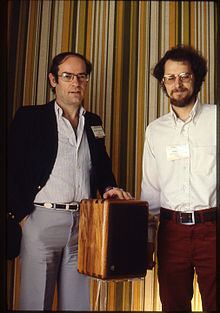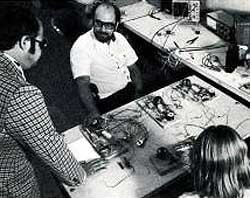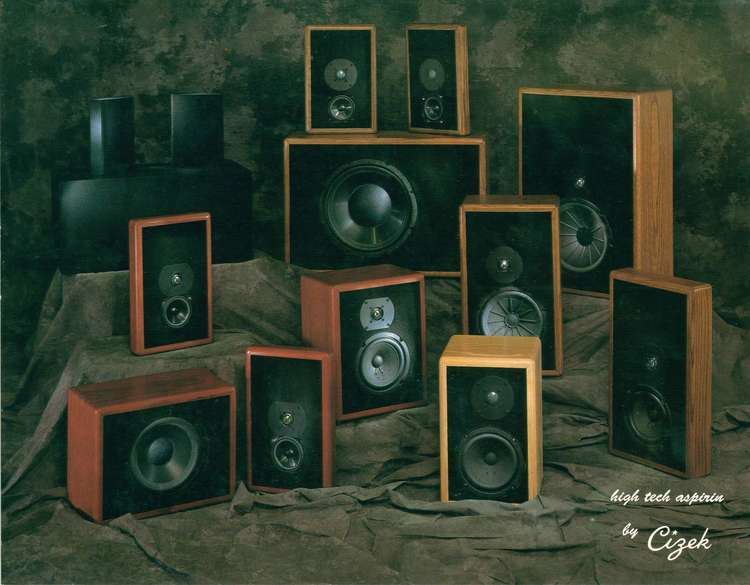 | ||
Died 1993, Torrance, California, United States | ||
Roy R. Cizek (January 29, 1943 – April 12, 1993) was an American inventor, HI-FI designer and manufacturer.
Contents
Founder of "Cizek Audio System" in Andover (Massachusetts), he has become fairly well known in the audiophile world, especially in Italy, especially in the late '70s for its high quality speakers. Born January 29, 1943, he worked for historical HI-FI manufacturers as Acoustic Research, JBL and Altec Lansing, before he went it alone. Blind since the age of three years, he developed a special sensitivity for music reproduction and patented a special crossover able to ensure a flat impedance curve to its speakers.

Early life

Roy became blind when he was a child, following a severe burn for which he also developed chronic leg ulcers that accompanied him throughout his life. And so, his severe disabilities probably contributed to the development of his fine feeling for the music and sounds in general. He grew up in Bloomington Indiana, produced here his first speaker, probably some handcrafted prototypes, as demonstrated by some rare photos. According to the testimony of Ron Nadeau, a close friend who knew him at Indiana University, just in Bloomington, Roy was a man of great generosity, with fine skills in woodworking, he built loudspeakers for students of the University in exchange for very little money. This "philosophy" inspired his whole future production: his challenge, was to become able to build low-cost quality speakers.

In the '70s, he moved with his wife Fran and son Carl at Cambridge (Massachusetts) where he worked as a consultant for Acoustic Research. In this state, precisely at Andover, he founded a few years later the company that bore his name, CIZEK Audio System.

In 1976, Roy produced its most successful product: "The Cizek Model One". This speaker introduced the concept of flat impedance module, with only one peak at the resonance frequency, achieved by a particular crossover, and at the same time used some innovative solutions as the upward inclination of the baffle, obtained with the special stands and the use of damping material (foam) in the baffle, in order to reduce the diffraction phenomena.

The Cizek One also showed a switch that allowed to choose the damping factor (Q factor) of the low frequencies between 0.6 and 1.0; this allowed to decide whether to listen music with driest and braked low (Q = 0.6), or with slightly emphasized low (Q = 1.0). Roy Cizek personally controlled all the "Model One" produced, so that they fell within the standards set by him. Being blind, he could not see the measurement, but used a special trick: he placed both the index and middle fingers so that the needle readout instrument should touch his fingers, and so the margin of tolerance were established. If the needle touched a finger, the speaker was discarded.
The article published in the no 54 of the Italian magazine "Stereoplay" (April 1978), signed by Renato Giussani, describes the innovative features of the Roy Cizek speaker system.
Subsequently, 2 other speakers were produced: The CIZEK Model 2 and Model 3, in addition to a stereo subwoofer with 2 woofers in a double closed box called MG 27; the latter, together with the Model 3 was the subject of an article in the magazine Stereoplay and which text is available online; in this article, it was pointed out that the Cizek system was able to reproduce the sounds between 27 and 700 Hertz in a range of ± 1 dB; moreover, in the conclusions of the review, the association Model 3 + MG 27 was compared to the best of existing speaker systems of that time. A few years later it was produced a mini monitor: the KA-1 Classic model, built entirely of solid KOA wood, a Hawaiian tree which the slaughter was forbidden just in those years; KA-1 could be combined with a subwoofer, the KA-20, thus constituting the "System Classic 20", the subject of a trial that appeared in the Italian magazine "Suono" No 113 of June 1982 and where in the conclusions was stressed the high product quality level of the system, which was considered "one of the best speakers ever heard.
Another particular speakers system which CIZEK built was the "Sound Window", a speaker for wall, flat and square with rounded edges, small to medium in size.
Later years
In the 80's Roy Cizek sold the company in Sheldon Feinstein who became the President of CIZEK Audio System. Unfortunately Sheldon died suddenly for a heart attack on his way to work and the company never recovered after this event. The new President of Cizek did not use an agenda, preferring to personally store all the addresses and contacts of suppliers and customers. After the death of Feinstien, 30% of the company was taken over by Giancarlo Bonetti, Italian importer of Cizek brand in the 70s and 80s. Thus, for a short period Cizek Speaker Series "Classic" (KA-1, KA-20 and KA-18) were built in Italy, commissioned by the Bonetti's company "ESOTER", to the young Franco Serblin, HIFI designer, who in 1983 founded the Sonus Faber, a leading Italian manufacturer of loudspeakers; and in fact, many Sonus Faber speaker systems aesthetically recall the Cizek Model KA-1.
Roy Cizek continued to produce speakers in the 80's and early 90's with his new company, the "High Tech Aspirin by Cizek", together with his third wife, in Torrance, California. These speakers were presented to at least two editions of the Consumer Electronics Show (CES) in Las Vegas.
Roy died on April 12, 1993 in Torrance.
The MG 27 sub-woofer system together with 2 Quad electrostatic speakers is considered a milestone and used for comparison of modern speakers at the magazine Stereophile.
